Over a decade or so, digitization in every single sector is the recipe for growth and acceleration. This assists businesses to evolve and find ways to transform their relationship with users through 2024. Likewise, digitization helps healthcare delivery worldwide and in the United States.
The majority of healthcare companies can devise customer-centric strategies to improve the quality of medical care. Healthcare should be more inclusive for everyone. It should allow individuals to get a custom medical care plan as per their lifestyle, disease profiles, and nursing-care needs.
Wider movement and access of goods and products to consumers greatly impact the markets globally and in the USA. Equally, the digitalization of health systems completely enables people to opt for better medical care. That’s where professional on-demand developers can build intelligent healthcare systems to better serve patients.
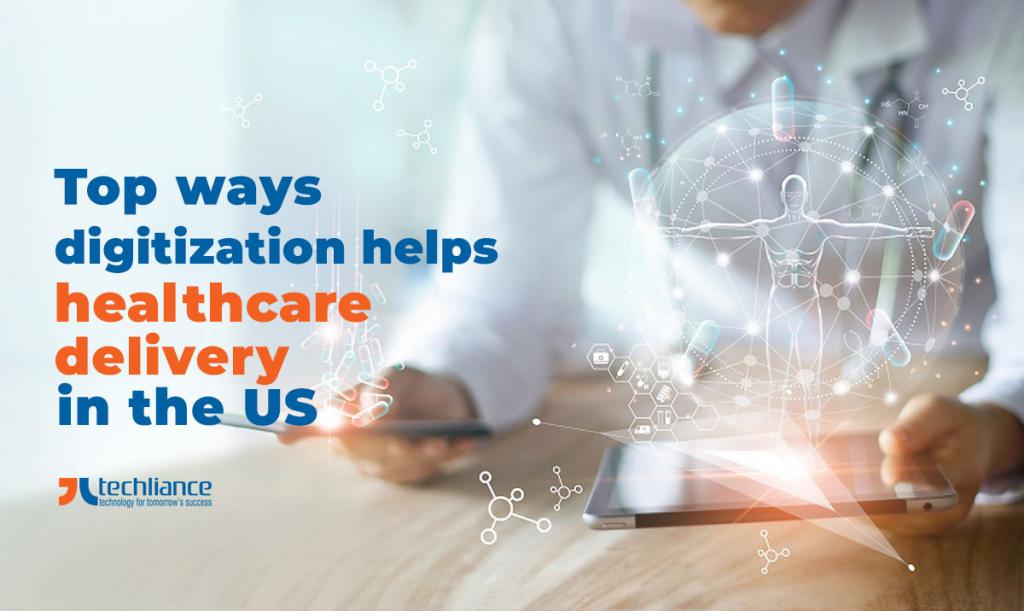
The leading challenges for medical care management
Here are some of the major pain points for efficient management, as digitization helps healthcare delivery during 2024.
- Inclusivity of medical care for all
- Correct disease diagnosis with minimal errors
- Instant and responsive healthcare
- Saving patients from the needless wait
- Provision of medicines or aid on time
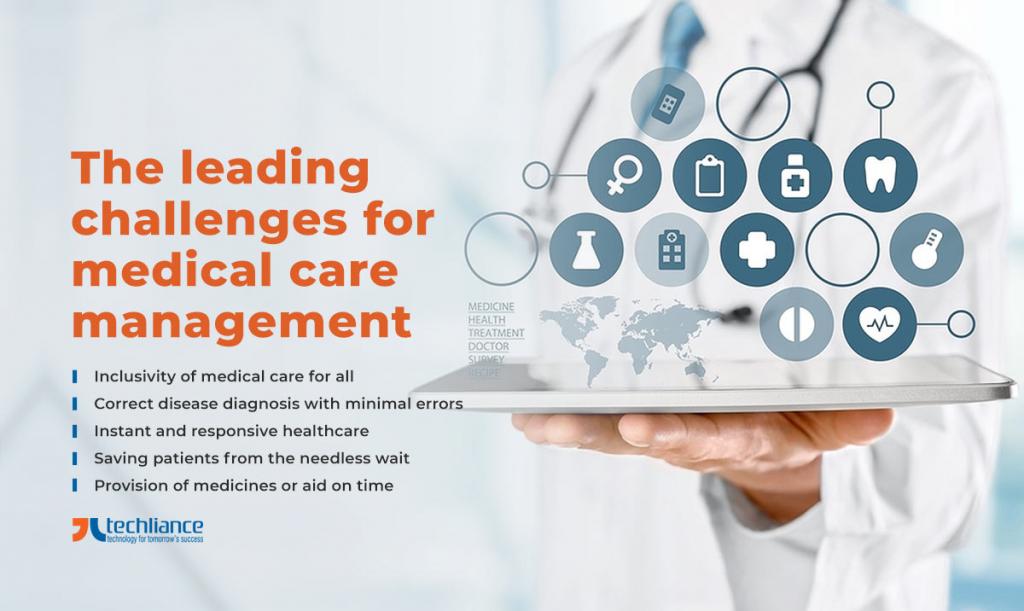
Statistics about healthcare and key takeaways
The research reveals that the healthcare revenue worldwide in 2022 is USD 59.70 billion. By 2025, it is likely to hit US$83.42billion. Therefore, it denotes a CAGR of 11.80% in the forecast period of 2022 to 2025.
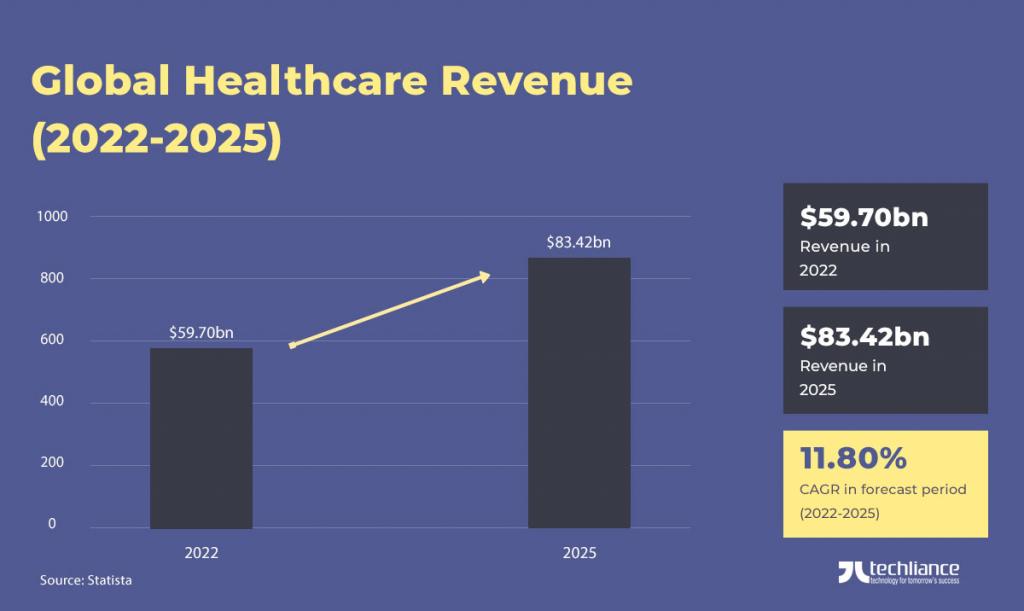
Another study finds the digital health market globally at US$334 billion in 2022. This figure is forecast set to spread to USD 660 billion by 2025. Thus, it indicates a CAGR of 25.49% for the forecast period of 2022 to 2025.
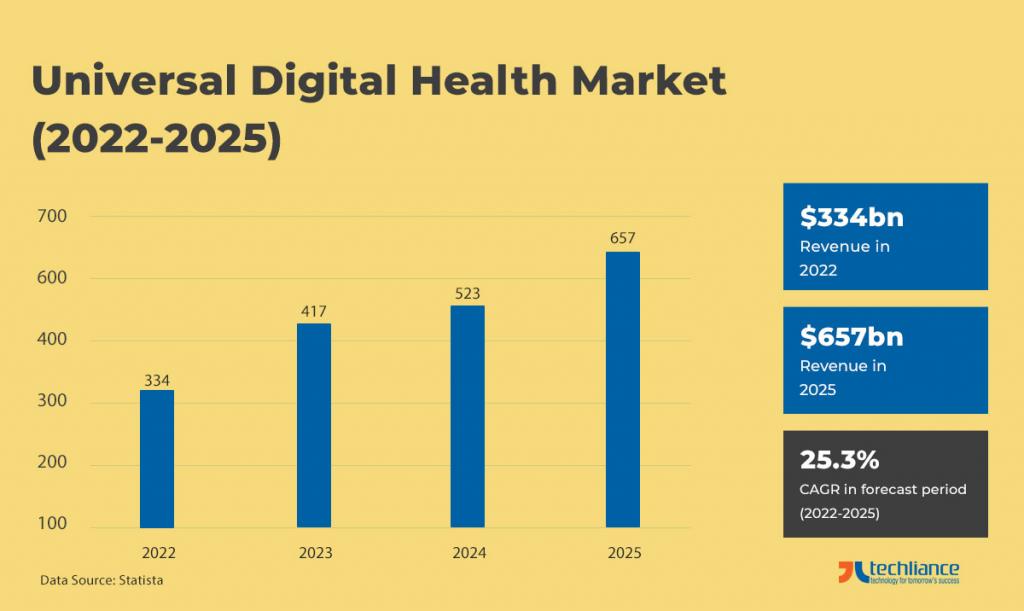
The national health expenditure in the US stood at $4.1 trillion in 2020. Centers for Medicare & Medicaid Services (CMS) predict this figure to grow to USD 6.8 trillion by 2030. So, it implies that the forecast period of 2020 to 2030 will see a CAGR of 5.19%.

In the United States, medical spending per person was $12,641 in 2021. Consequently, the people in the USA pay as much as twice the cost of healthcare. The per capita health expenses are likely to surge to USD 17,611 by 2028 (a percentage increase of 39.32%).

Infinite impact of technology on health systems in the USA
Data gives a definitive edge to the way we live our lives. The predictive mode of data analysis better allows companies to understand healthcare needs. So, they get a greater edge in providing the suitable type of medical facility as per the predictive demands.
Today, machine learning, AI, and IoT are greatly impacting medical care everywhere. With a growing population in the United States, the healthcare sector has to keep up in finding innovative ways. After all, they have to provide comprehensive medical treatment to citizens across the country.
The countries like China, New Zealand, the USA, Japan, and Taiwan have got great praise for bravely fighting COVID-19. Provisioning national health cards, cashless payments, and a universal health insurance system are decent steps. Because they empower people to receive medical supplies and masks without any shortage.
The leading ways digitization helps healthcare delivery in 2024 are given below.
- Medical companies embrace innovation
- Improvement of healthcare processes
- More accurate diagnostic services
- Advanced patient monitoring
- Faster disease emergency response

Next, we briefly look at these areas where digitization helps healthcare delivery everywhere.
Medical companies embrace innovation
McKesson is the biggest US healthcare company with annual revenue of $238.23 billion in 2021. It utilizes technology for creating solutions that are widely impacting citizens across the country. These solutions are built on technologies such as IoT and big data.
Japan’s largest pharmaceutical company, Takeda is monitoring Parkinson’s disease in patients through wearable devices and telemedicine. The primary intent of integrated telemedicine platforms is to examine patients online for diagnosis. Afterward, the online pharmacist prescribes the medicines for the patient, which are then automatically sent to the patient’s home.
This completely bypasses the hassle of medicine request initiation by the patient. That’s a win-win for everybody, as it provides endorsement from the physician. The disease monitoring tools greatly enable conducting a thorough patient examination and wider accuracy of the diagnosis.
Salesforce is improving operational efficiency and patient engagement by centralizing all its digital patient data. While SOMPO holdings are leveraging data to personalize services in nursing care. The primary objective of these solutions is to allow greater interaction between patients of varying ages.
Similarly, technology can facilitate even senior citizens who require assistance in plugging with a monitoring device for further diagnosis. The concept is to have a wider bridge for the greater association for all. So that technology can be useful for all human beings irrespective of their social restrictions.
Improvement of healthcare processes
Over time, there is a need for improving existing healthcare processes. That’s where smartphones, tablets, and rapid usage of web-centric and mobile applications come in handy. Accordingly, users are more aware of sharing data by using digital healthcare solutions, particularly telehealth systems.
This flow of information in real-time is a great enabler of better communication between patients and doctors. Subsequently, it initiates better medical care processes that are a starting point for many hospitals and health organizations. Also, it allows a greater level of compliance for these institutions.
It is a must-have requirement for health companies and wellbeing institutions. Without compliance, many organizations lose out on practicing rights. So, they need to fulfill standards with proper processes in line.
More accurate diagnostic services
Today, e-health has been a vital component in maneuvering faster results for patients. With mobile technologies, the order-entry process begins with a request by a clinician or nurse for an additional diagnosis. Such a situation can arise either on rounds or in response to changes in a patient’s medical condition.
Realize that technology allows greater assistance here. So, the flow of information and communication services can drive the adoption of systems for telemonitoring patients. This all leads to precise diagnosis of diseases and thus better cures.
Read more: Advantages of ECRFs
Advanced patient monitoring
In terms of critical patients, advanced monitoring tools greatly increase the chances of survival. The majority of organizations in the healthcare sector have to comply with certain standards and guarantee patient safety. Also, advanced monitoring can help in providing data for clinical decision-making and disease management.
Faster disease emergency response
Telemonitoring is turning out one of the most viable options for healthcare. Especially, during the coronavirus pandemic when patients could not even travel to hospitals. Healthcare organizations can monitor therapy and even activate services in case of an emergency. It is like having a doctor continuously monitor a patient and provide effective aid without any slippage of time.
When COVID-19 went on to devastate the world, it became necessary to have wider access to healthcare. The focus automatically shifted toward digitizing the accessibility of doctors, physicians as well as medicines for immediate relief. Consequently, the use of smartphones for tracking the spread of Coronavirus became a major means of diagnosis.
The usage of AI to help detect patient symptoms was also beneficial. Now that the destruction of the pandemic is mostly over. In many ways, there is no looking back from healthcare digitization.
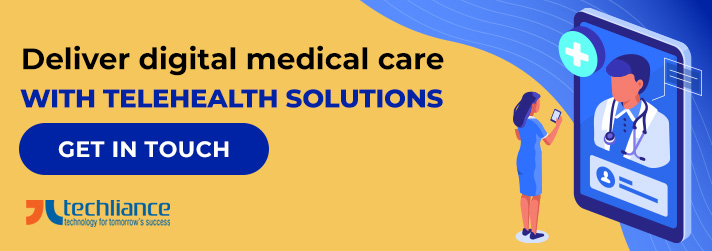
Conclusion
Technological advances are blurring boundaries where even industries are overlapping for providing solutions to customers. Take the example of healthcare where hospitals and staff are working with technicians to provide remote medical aid. Upon diagnosis, the digital health systems prescribe the medications to the patients.
Moreover, the health system also communicates the order for medications to the pharmaceutical companies. As they then are responsible for providing the medicines to the patients. This connection is wide-ranging that includes medical institutions, healthcare companies, and government.
Technology is the driving force that will continue to bridge the stakeholders together. It will continue to improve current healthcare systems. Furthermore, it will bring greater and more powerful medical care solutions in the future.




